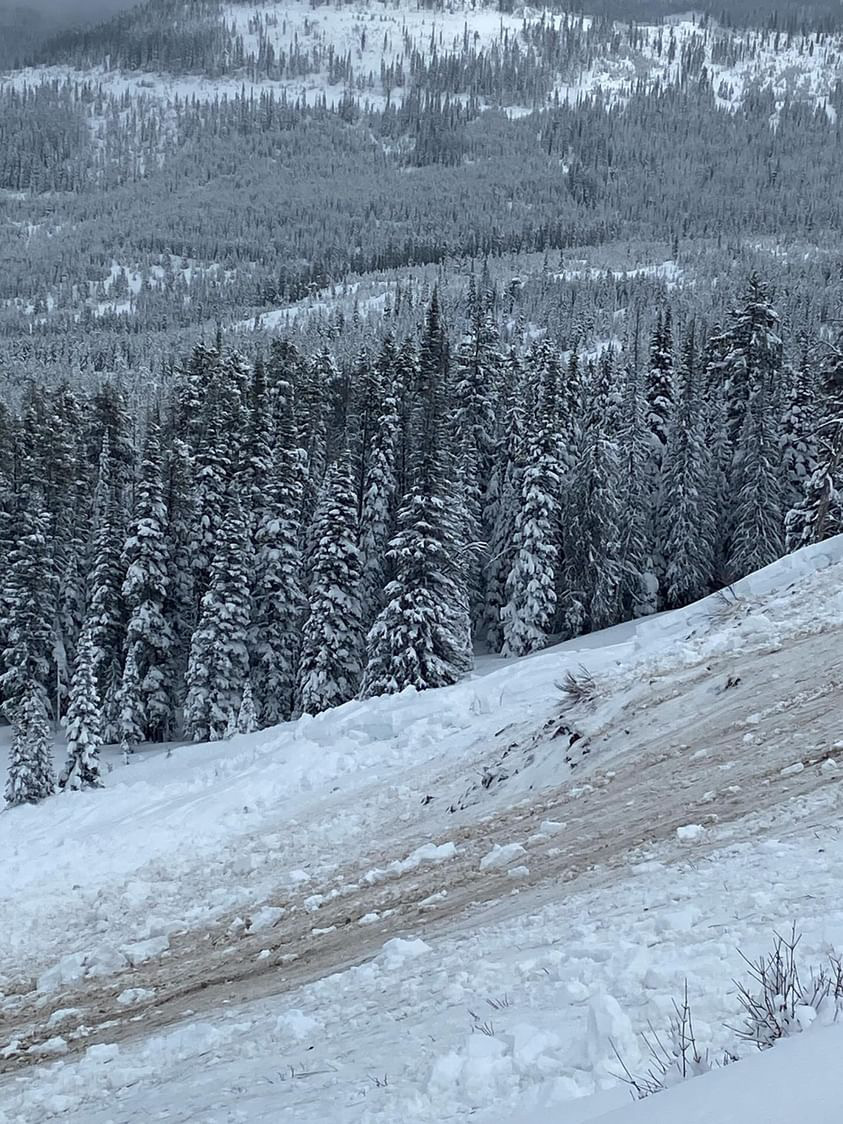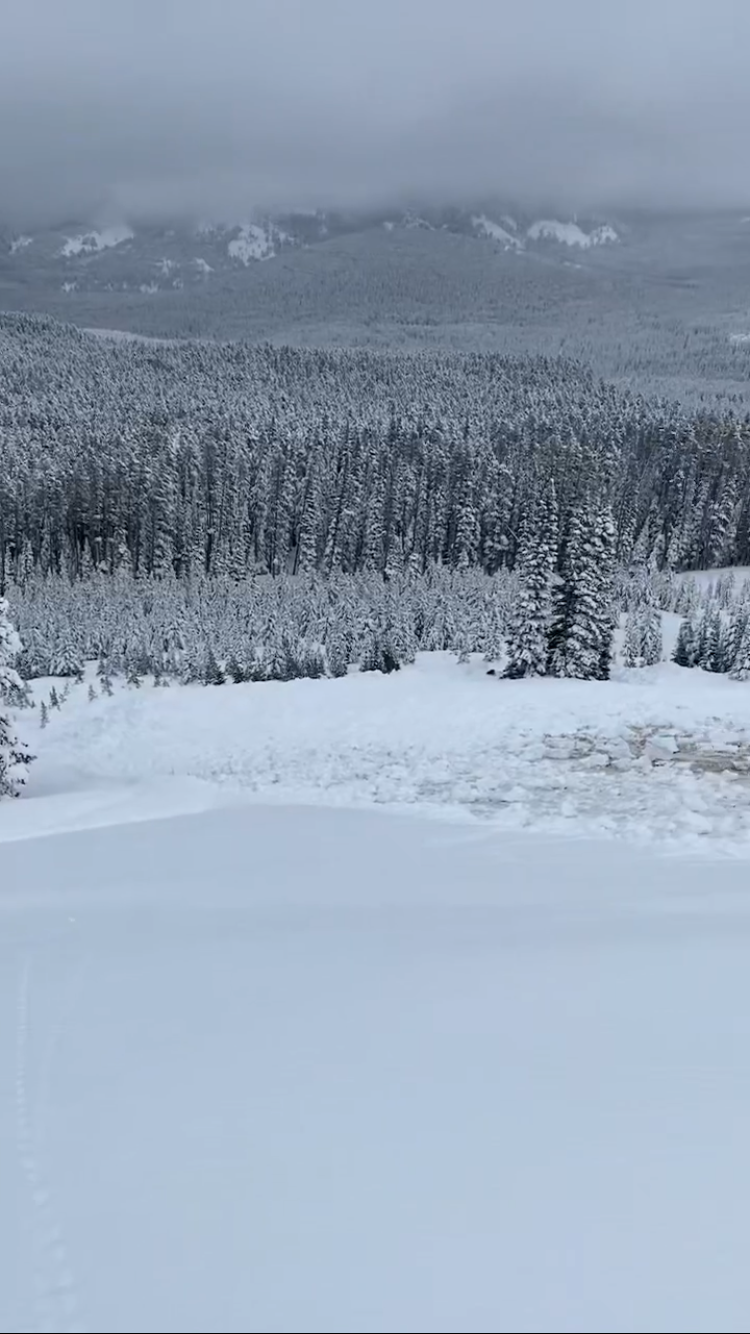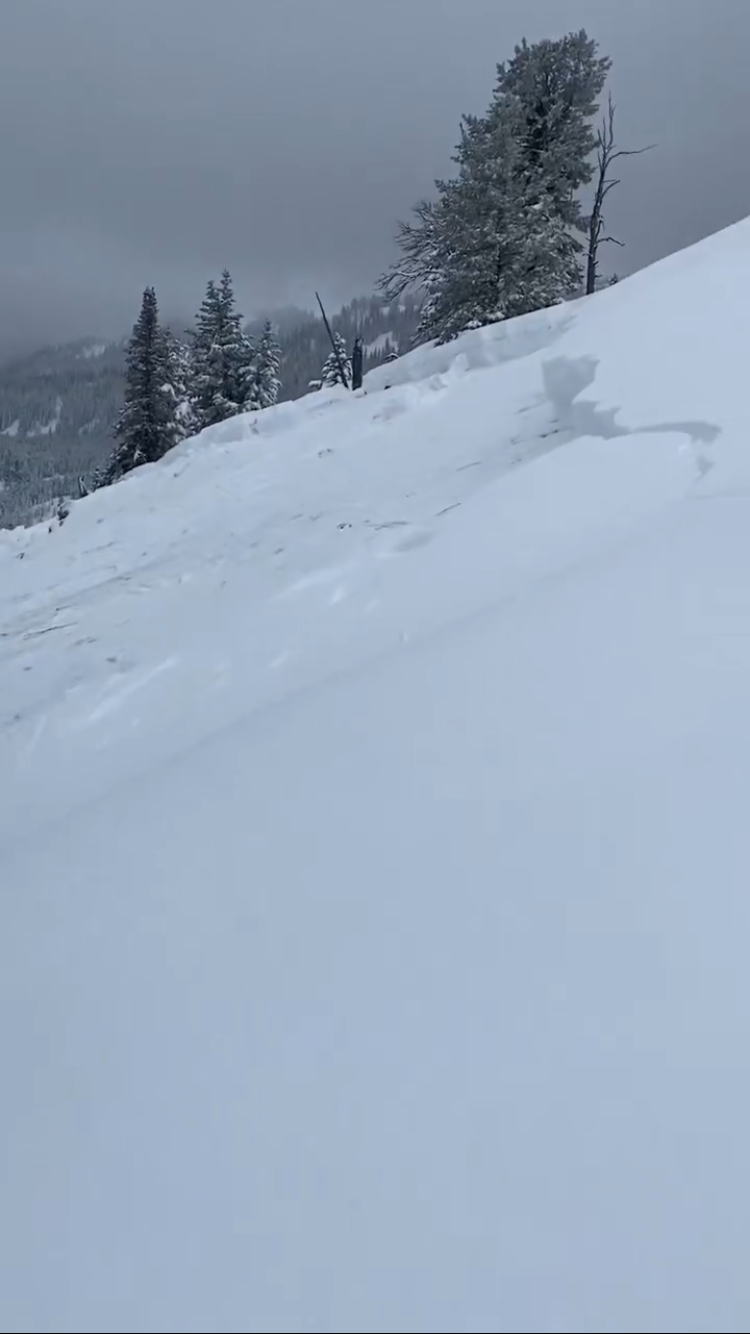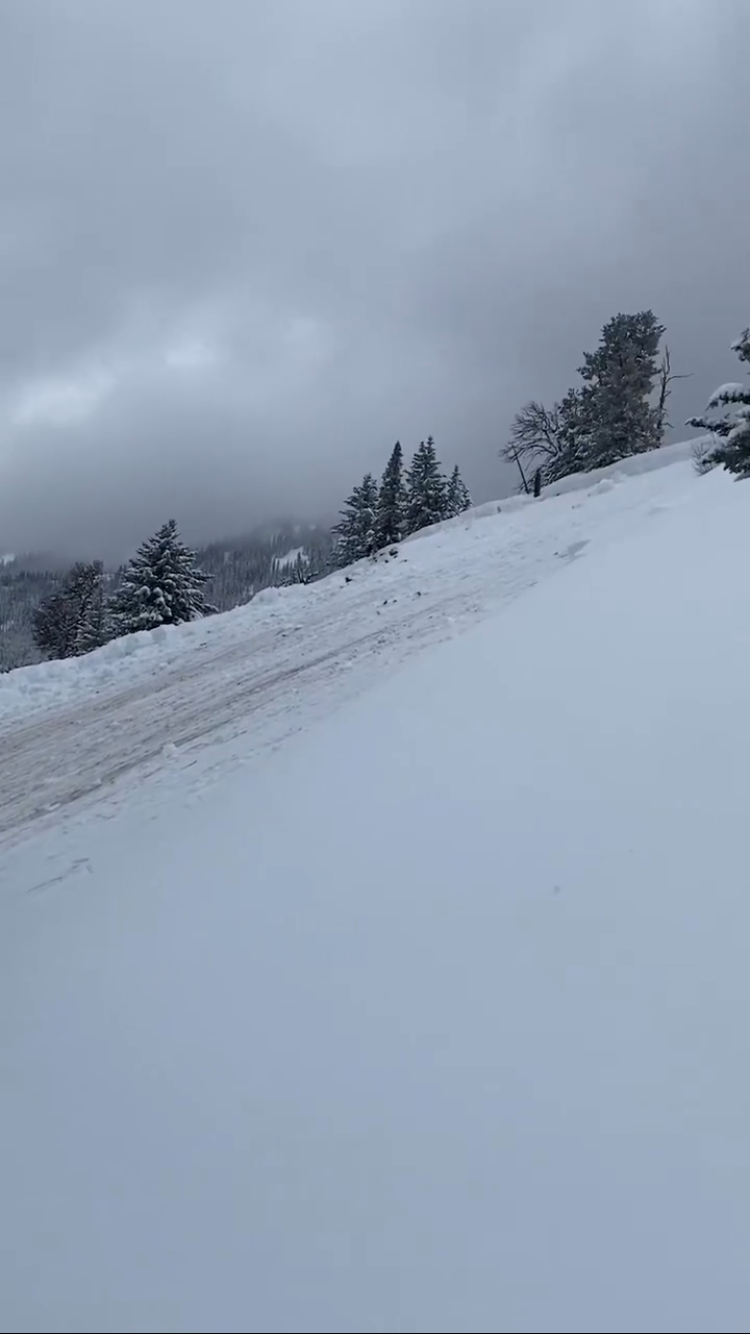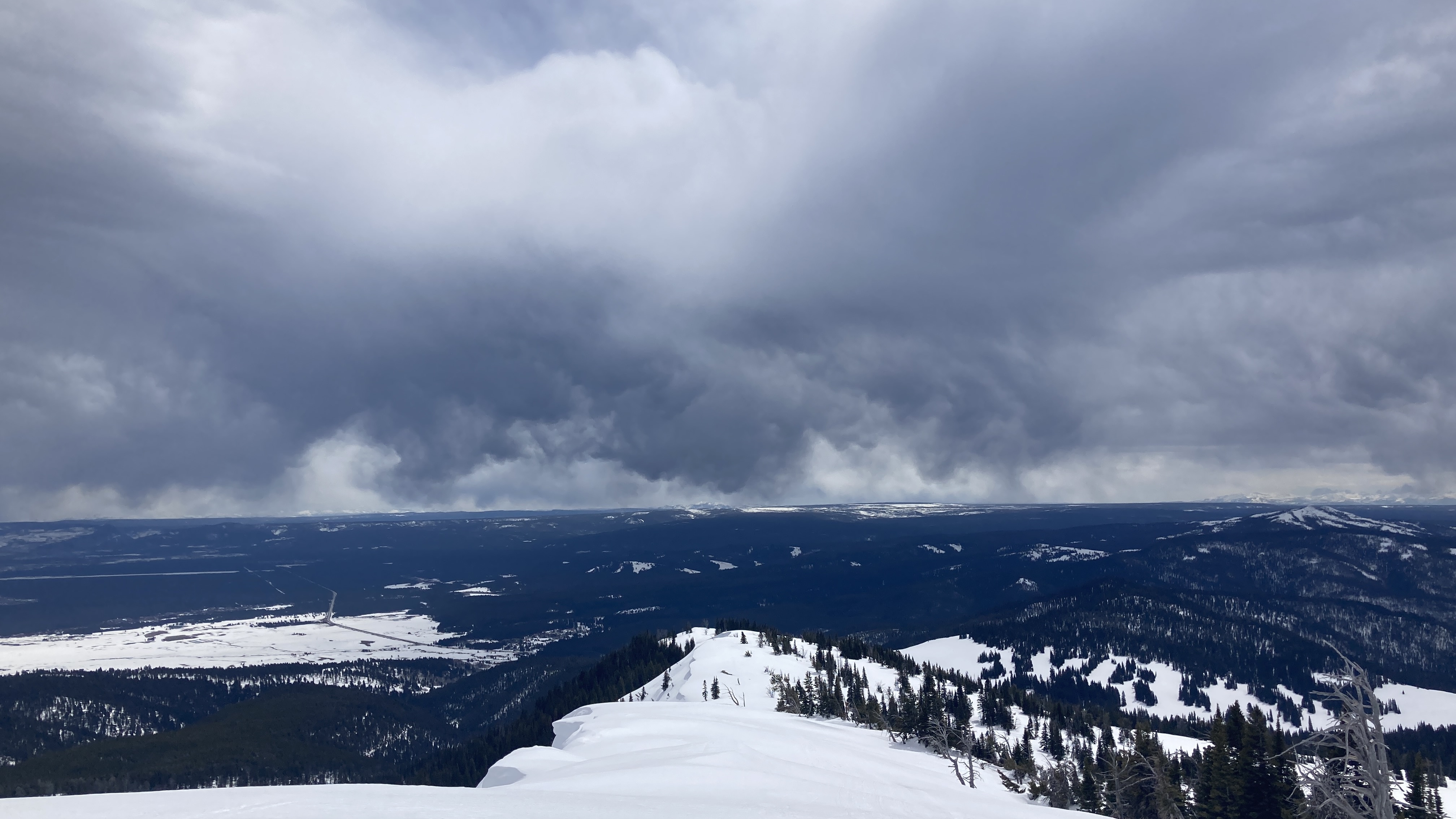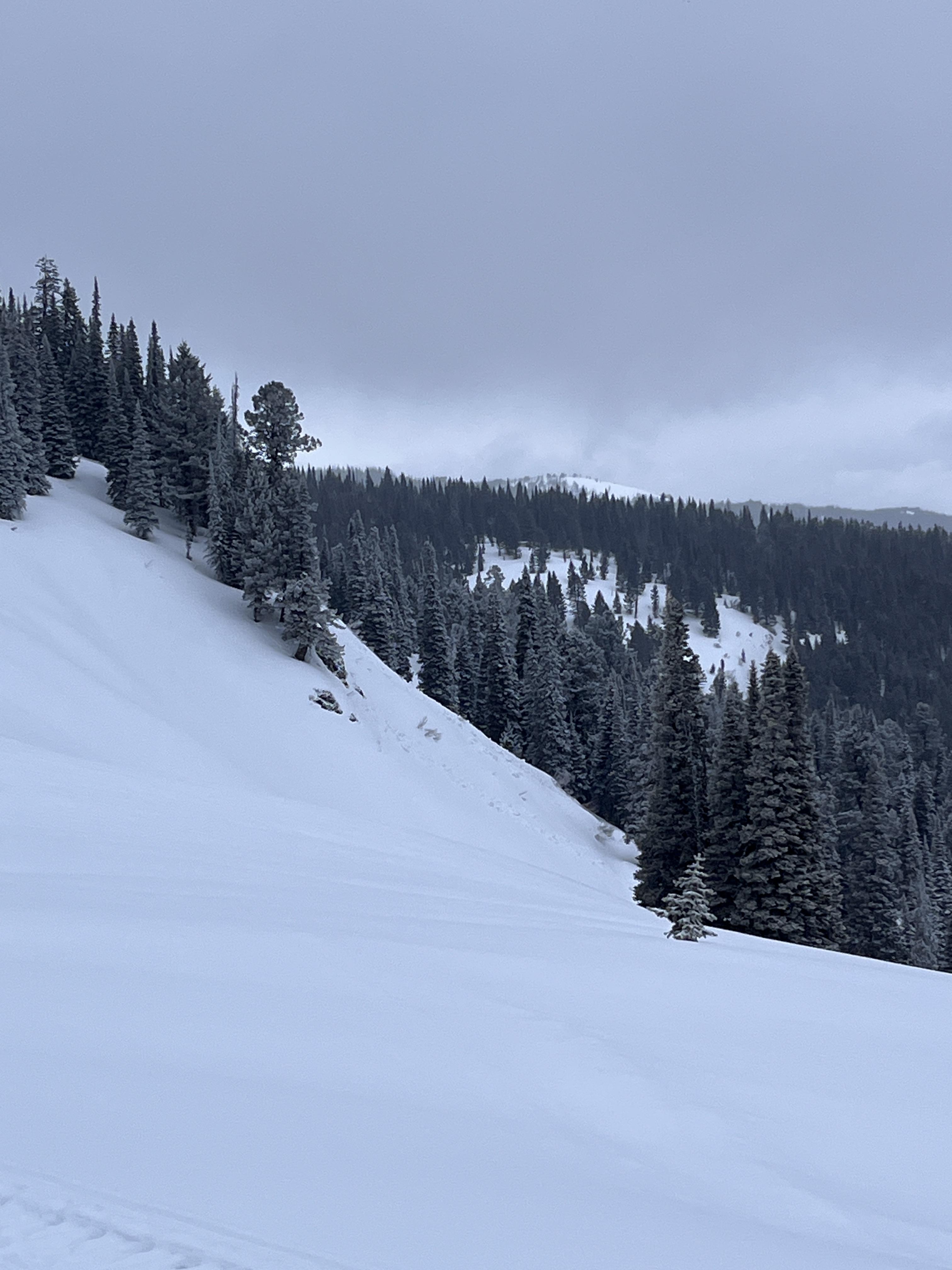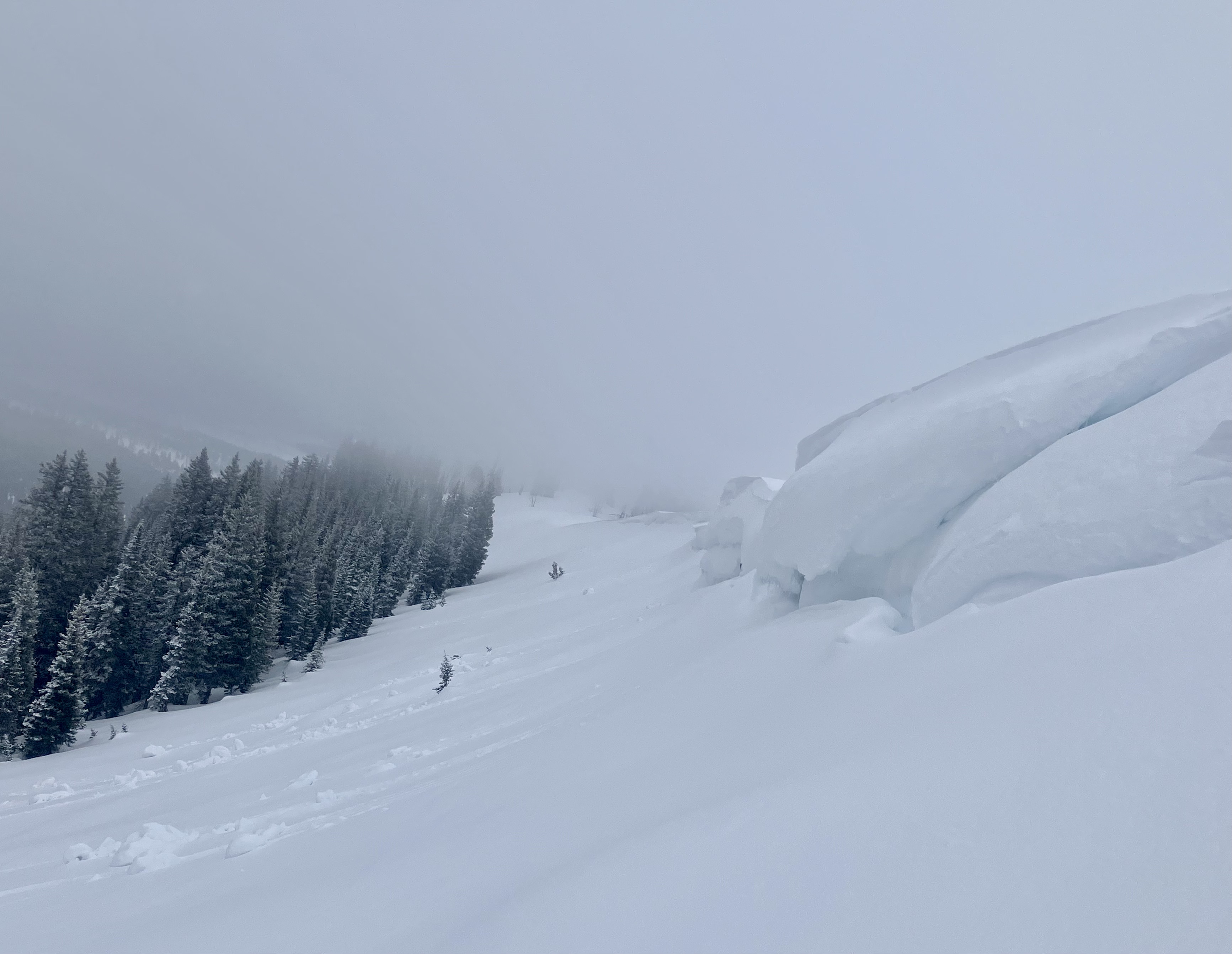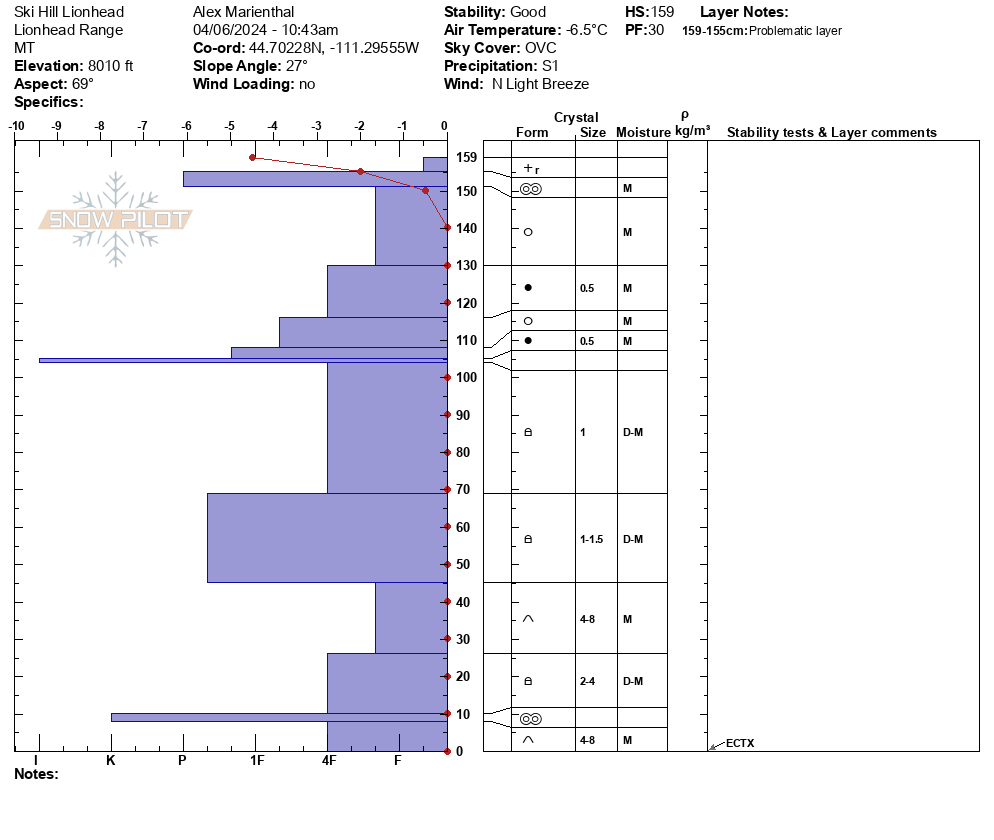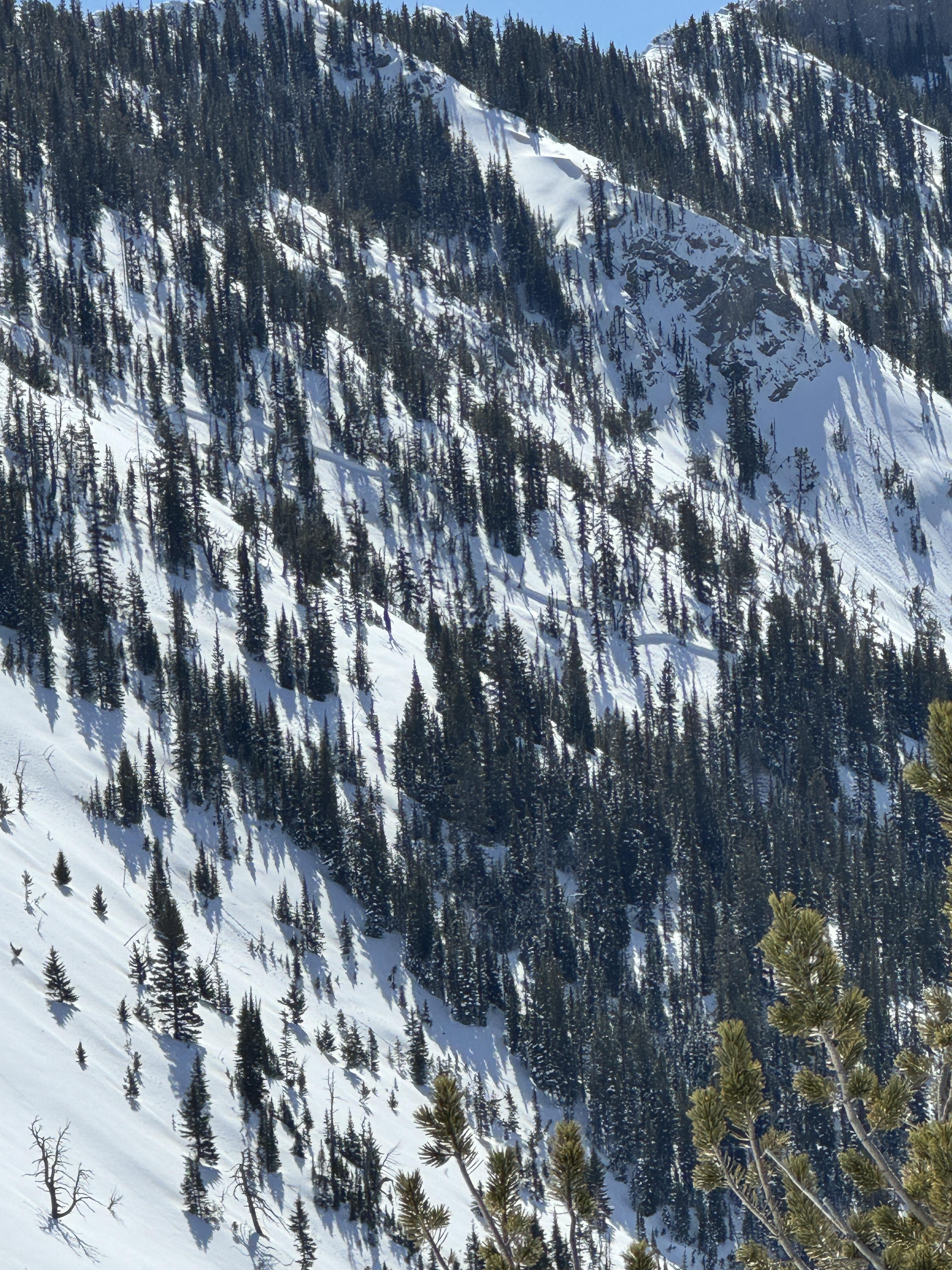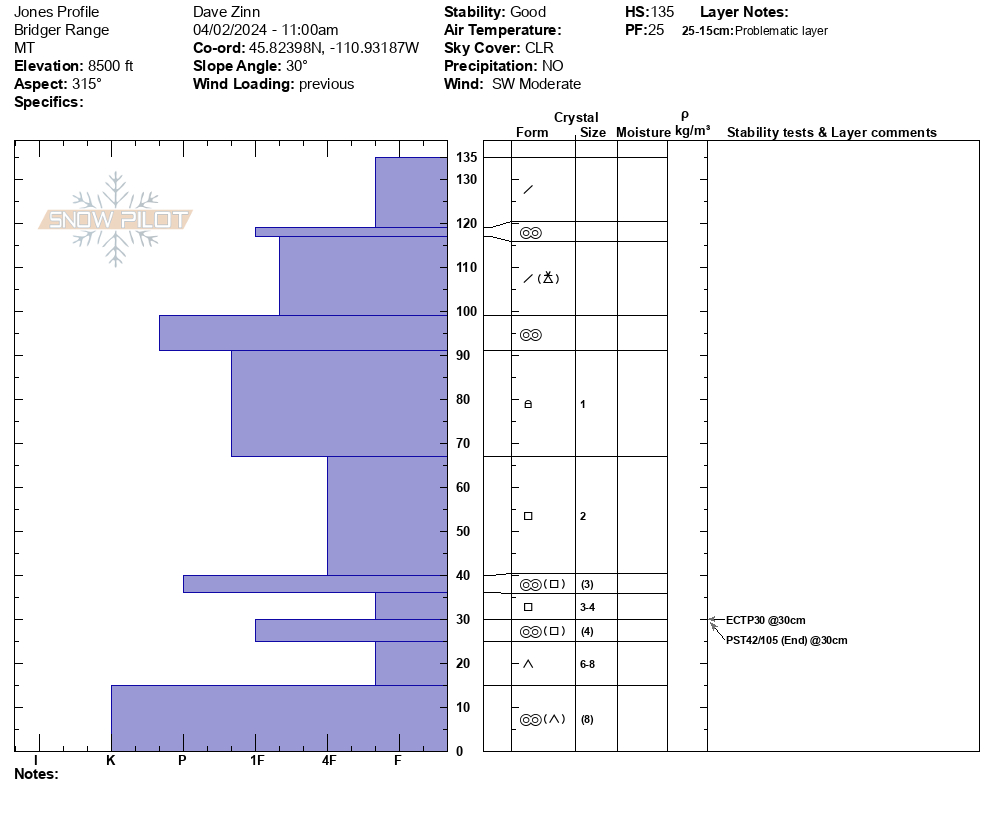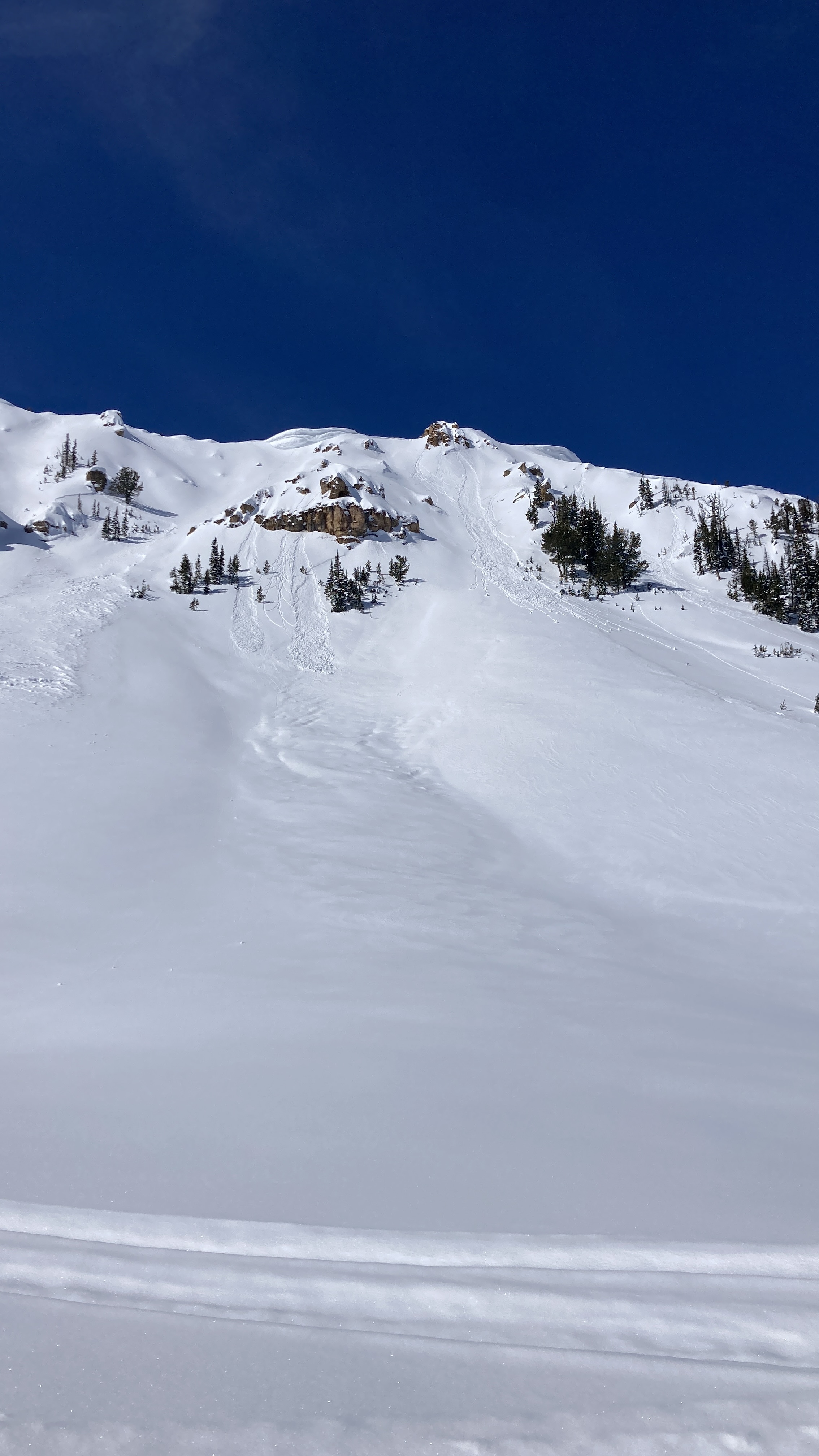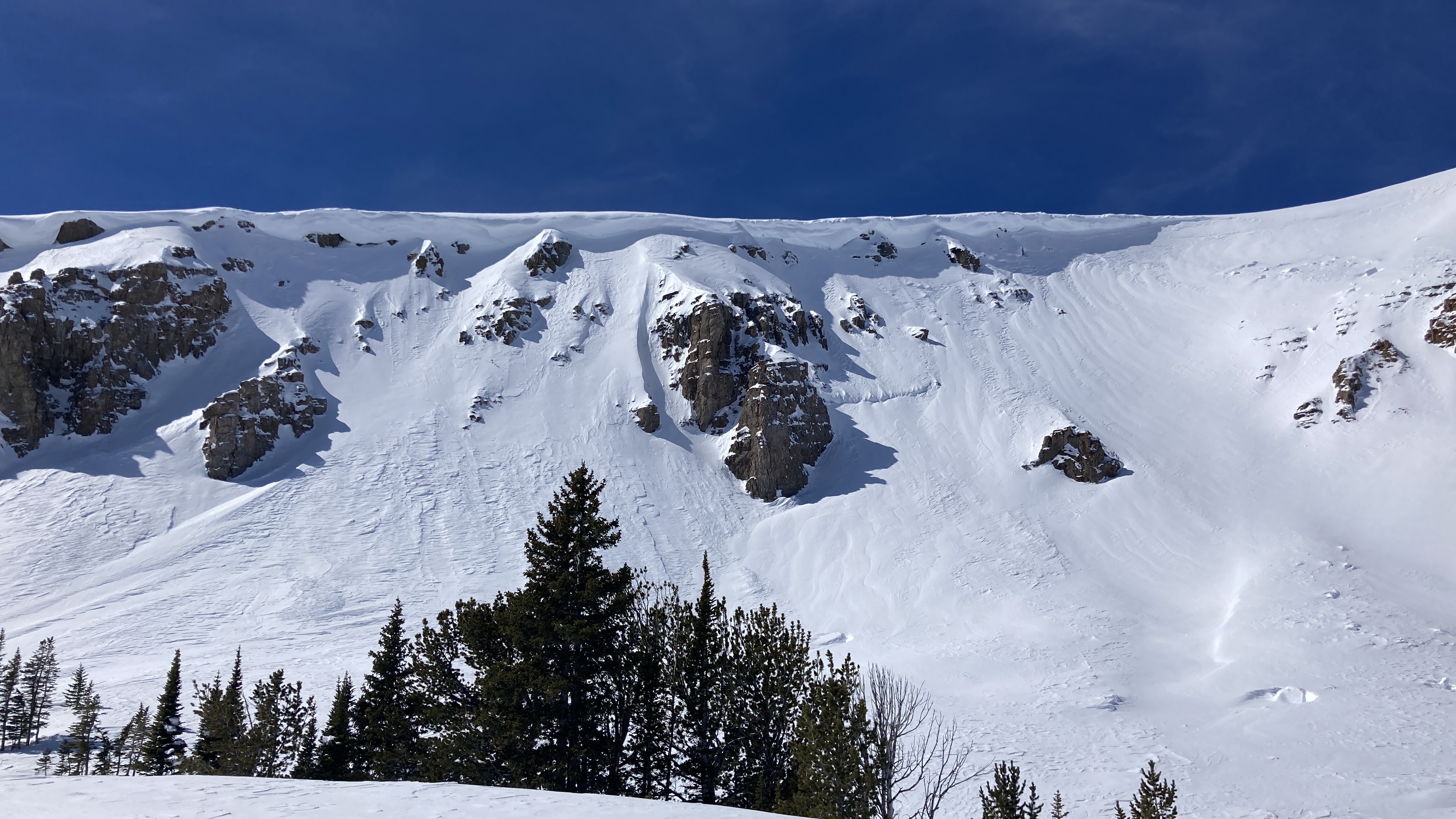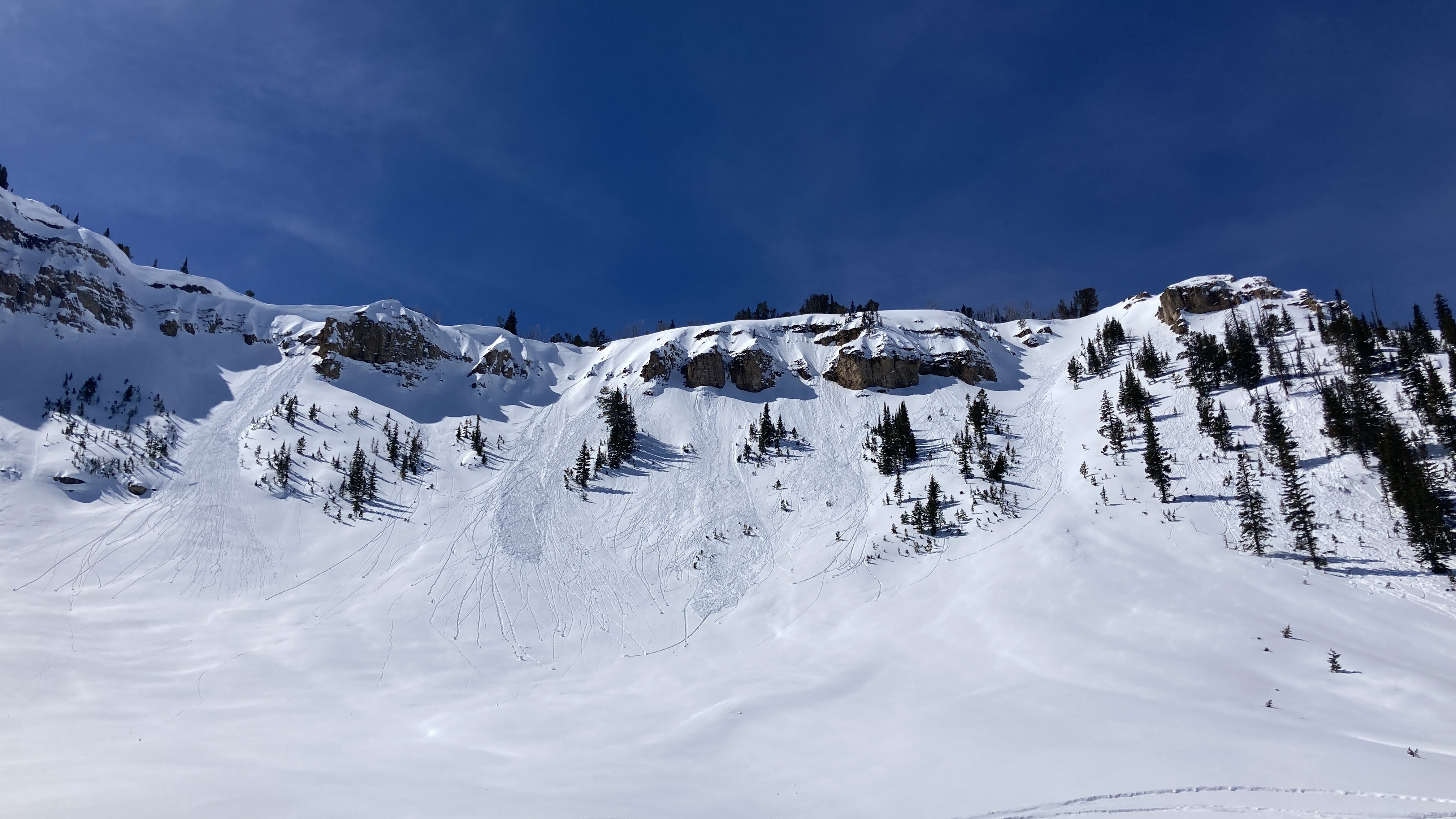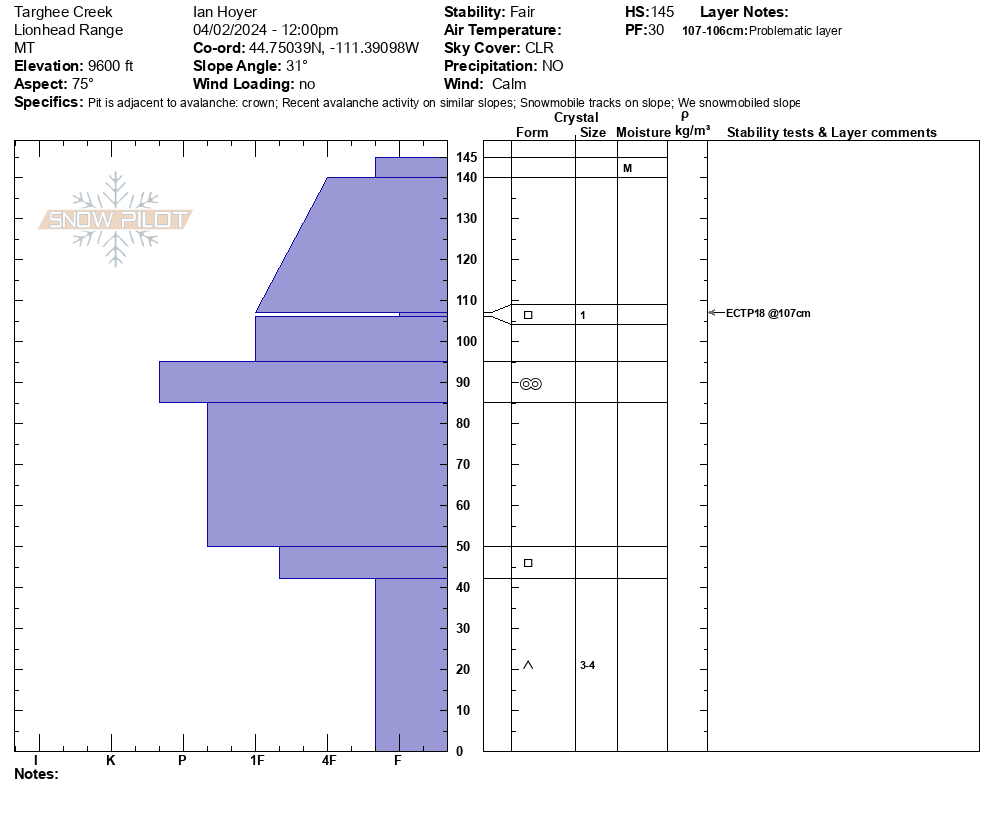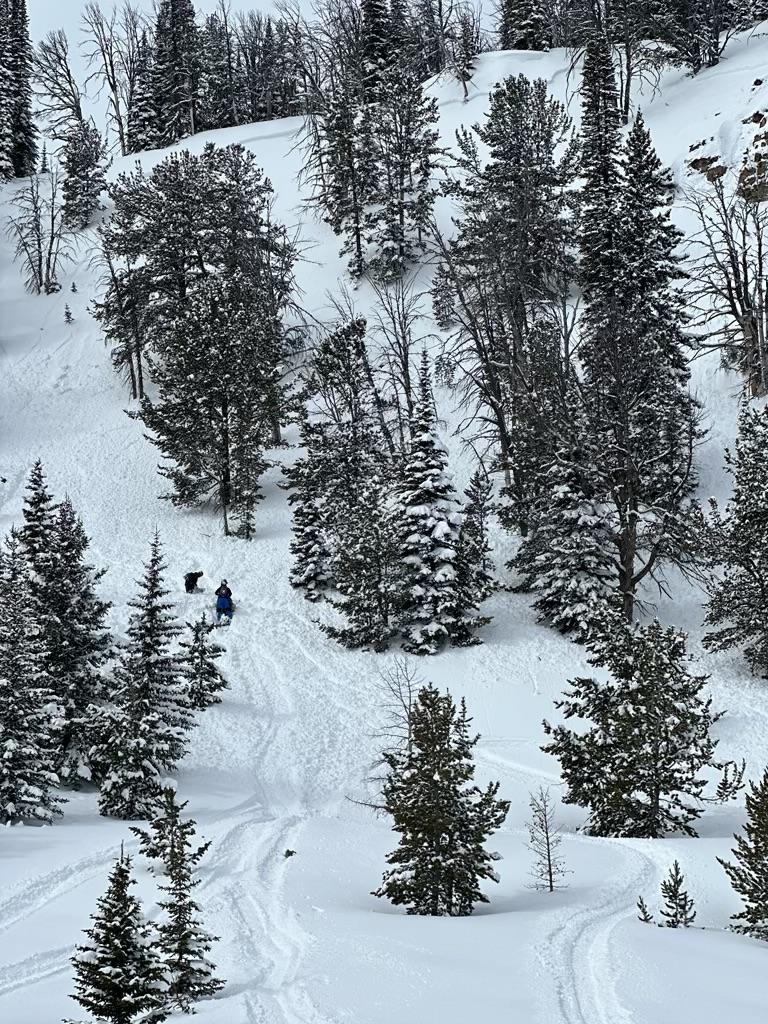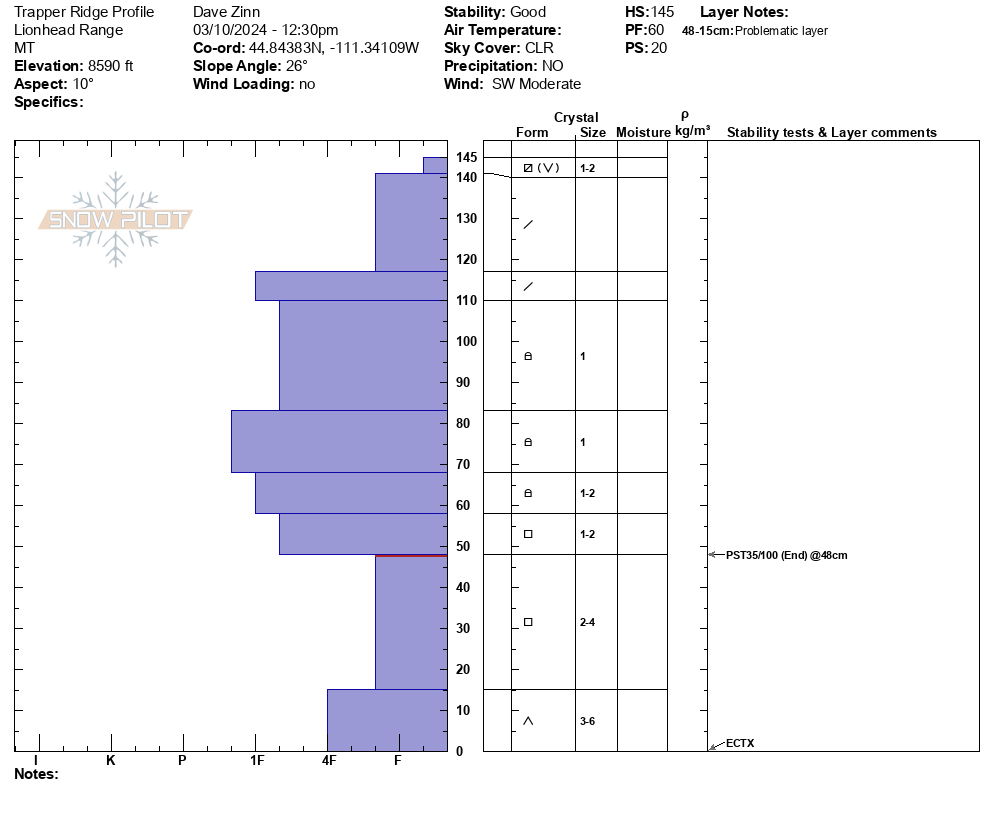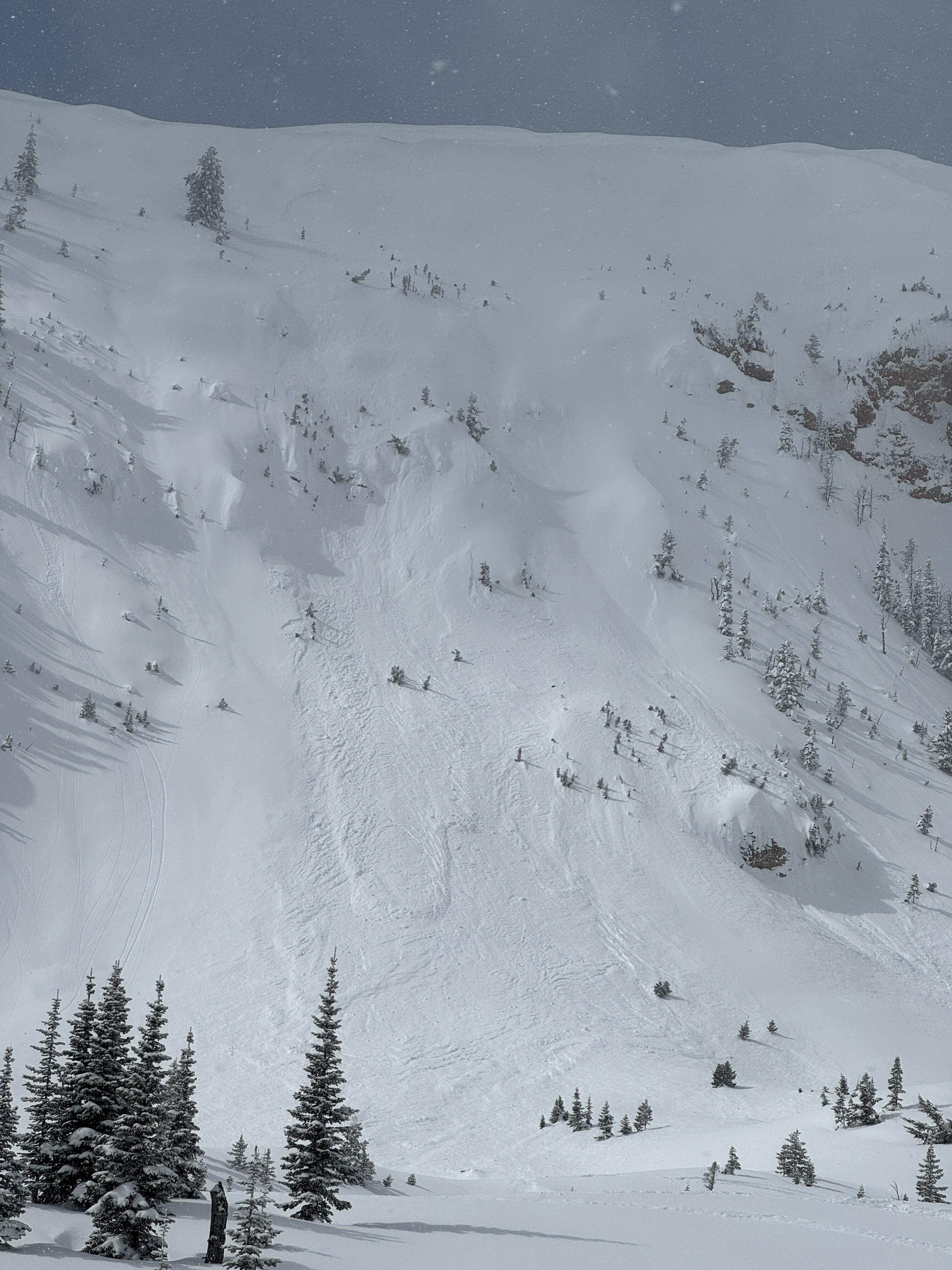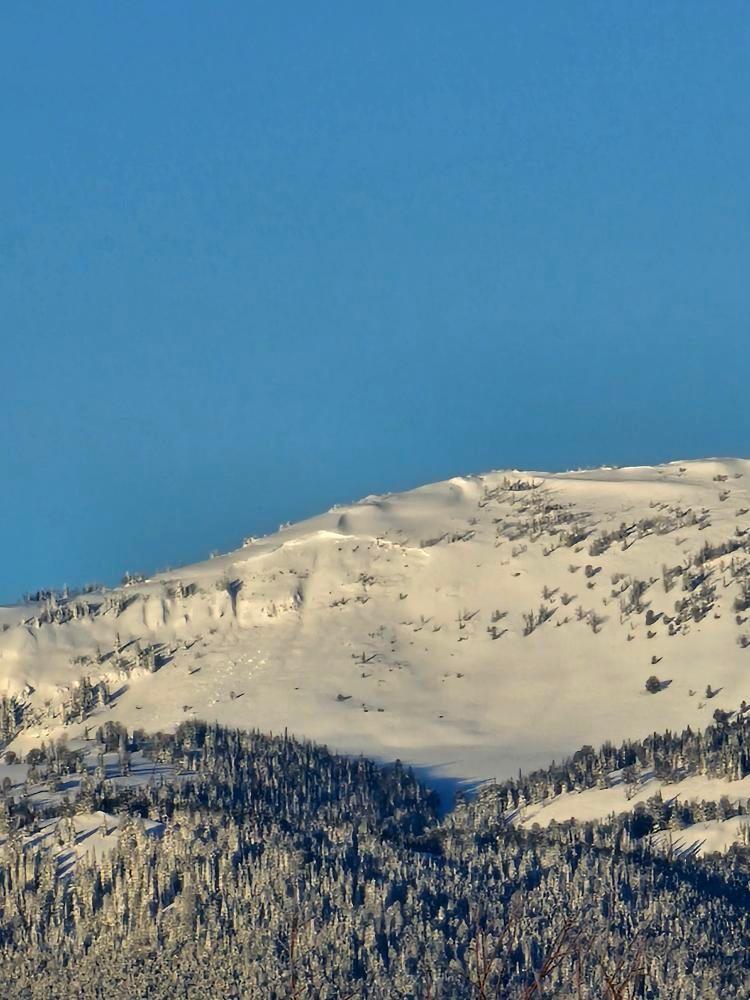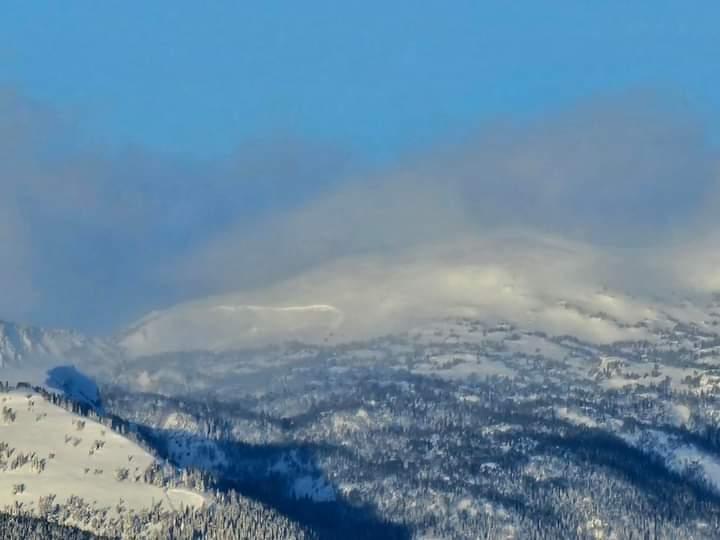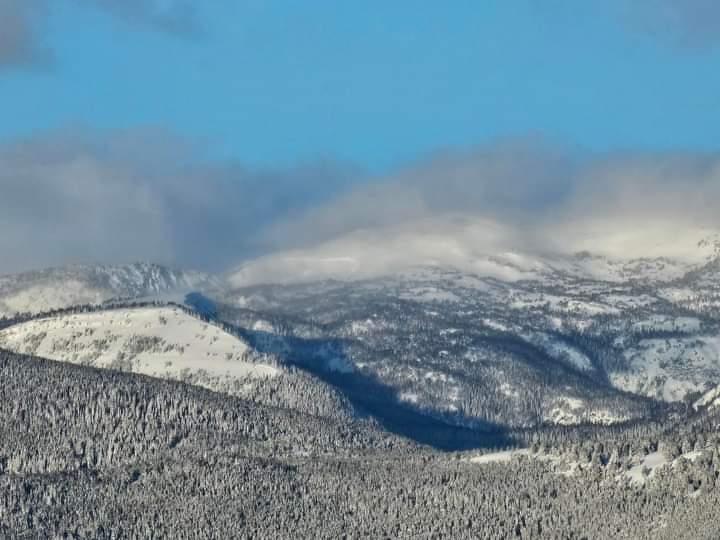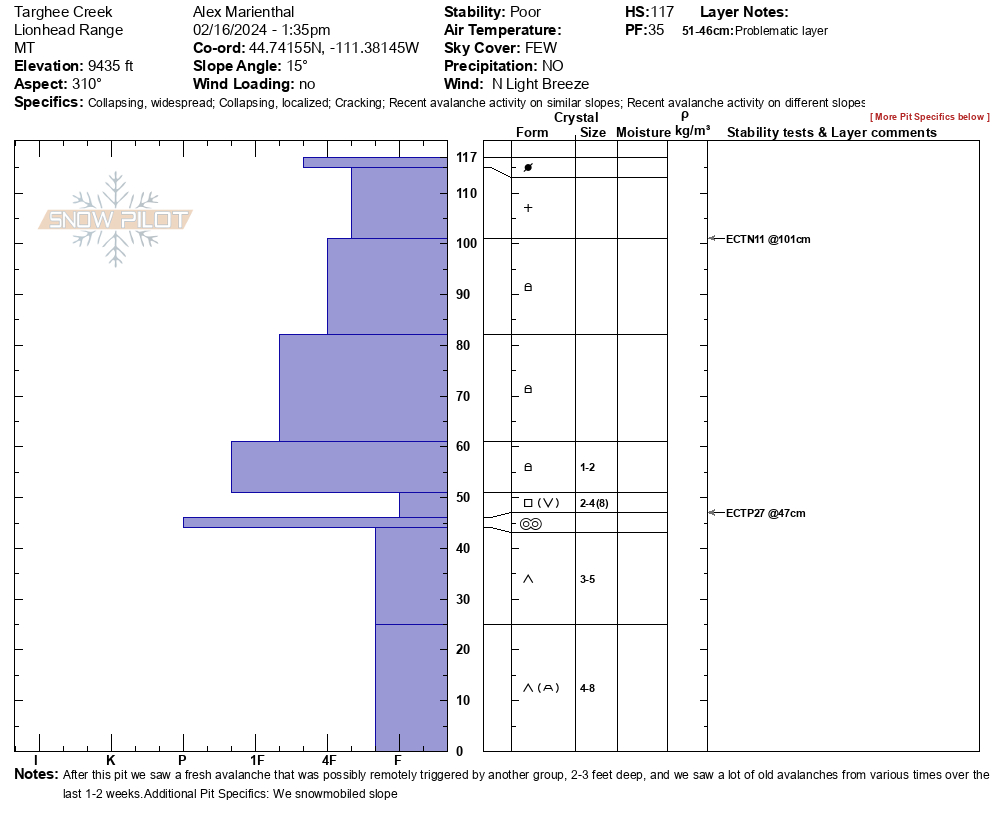Snow Observations List
From IG message: "I was at the bottom of the Gardner Headwall when that avalanche happened. Feel free to share..."
Full Snow Observation ReportFrom IG message 4/17/24: "Remote trigger up little bear today. Went to the groundish."
Full Snow Observation ReportFrom IG: Wet slide to the ground above Quake Lake.
Full Snow Observation ReportRode from Buttermilk to Lionhead Ridge to take down the weather station for the season. The snowpack was fully saturated and sloppy at lower elevations. By 8000 ft there was a firm crust with a couple inches of wet snow above it around noon. Winds were breezy at ridgetops, keeping the snowpack a bit cooler (but still getting wet). Ominous clouds moved in around 12:30 pm. We quickly left before getting rained on.
We saw no signs of recent avalanches.
Full Snow Observation ReportClouds may have kept the danger from reaching CONSIDERABLE, but from webcams it looks like they eventually blew through, so I'm not sure.
Today, we rode from the Buttermilk trailhead to Ski Hill then up to Lionhead Ridge.
At the top of Ski Hill, there was a 2" thick supportable crust below 2" of new snow from the last 24 hours. We dug here on a NE-facing slope at 8000', almost the entire snowpack was moist/wet. We had ECTX results in our stability tests. Just to the north of our pit location we saw a small wet loose avalanche that likely happened earlier this week. Along Lionhead Ridge 2-4" of new snow was beginning to form small drifts that were unreactive on test slopes. On the north side of the ridge, we saw areas where portions of cornice had fallen over the last week of warm temperatures. Snow continued on and off through the day with little to no accumulation. West wind remained light throughout the day with moderate gusts.
Full Snow Observation ReportWe toured down the west side of the Bridger Range on the edge of Truman Gulch and found predictably weak snow on an upper-elevation NW-facing slope. Conditions were variable and transitioned to a thick crust as we moved on to a lower elevation, west-facing slope. By the time we came down the Ramp, the snow was getting wet, we saw roller balls, and we avoided steep, sun-exposed terrain.
We dug below NW Passage. It was a 135 cm deep snowpack, dry throughout, with Fist plus hard facets and depth hoar making up the foundation (ECTP30, PST 42/100 end at 30 cm from the ground.
Full Snow Observation ReportMODERATE rising to CONSIDERABLE seemed correct.
We rode from the Buttermilk trailhead up Denny Creek to Lionhead Ridge, along Lionhead Ridge through Watkins Creek and to the motorized boundary at the head of Targhee Creek.
There was a ~1" crust at the surface when we left the trailhead, with dry snow beneath. We saw our first wet loose avalanche of the day running around 11 am. By 12:30 there were dozens and many rollerballs. None of them ran particularly far or picked up too much volume. The snow surface was moist on sunny slopes by late morning, but not more than a few inches down.
We saw one small slab avalanche that occurred since this weekend's snow. It appears to have been triggered by a snowmobile yesterday (4/1/24). It broke 10" to 2 ft deep, 50 ft wide, and ran ~50 vertical feet. It broke on a thin layer of facets beneath the new snow. Digging in the crown, dry facets at the ground were along still present and weak (fist hardness).
Signs of older avalanches were visible beneath the new snow, including one slide that broke in early March. No cracking or collapsing were observed today.
Full Snow Observation ReportMOD rising to CON seemed totally reasonable.
From text: A group of snowmobilers watched a pow surfer trigger an avalanche. The individual was buried to his chest and thankfully uninjured.
Full Snow Observation ReportWe ascended the north ramp of Trapper Ridge to the summit ridgeline. There were no signs of instability, and we did not see any recent avalanche activity in the nearby mountains of the Southern Madison Range or the Lionhead Ridge area. We dug a pit on a north-facing slope at 8600 feet elevation (ECTX and PST35/100end). The facets deep in the snowpack show no hardening trend, and they maintain their ability to propagate failure easily. Currently, it is simply a matter of the persistent weak layer having adjusted to the load they are supporting and being buried more deeply; thus, initiation of failure is more difficult. Large avalanches remain possible. The sun and warm temperatures affected the snow surface in the eastern and southern aspects (and I assume the western). A cool breeze kept any wet snow hazard from developing before we left at 2 PM. I suspect it did not develop today.
Of note, surface snow was weakening on northern aspects with a 3-4 cm layer of near surface facets and surface hoar. We will have to see how this behaves when it gets buried by new snow starting tomorrow.
Full Snow Observation Report
MODERATE seems appropriate for now. We did cross through some avalanche terrain but the area we skied was generally low-angle.
We rode Denny Creek to the head of Targhee Creek. The primary objective was to search for avalanche activity from the last storm and avalanche warning. There were two deep avalanches on heavily wind-loaded slopes. Otherwise, avalanches were confined to the new and recently wind-drifted snow - there were four of these smaller avalanches. The snowpack at Lionhead handled the recent loading events better and there were fewer avalanches I expected.
We did not experience any signs of instability (cracking, collapsing), but the winter’s snowpack history and concerns about triggering large avalanches kept us off of steep slopes.
Full Snow Observation ReportThe Avalanche Warning verified but on the low end of the rating. Today was good at CONSIDERABLE. We are moving quickly toward MODERATE. Riders are starting to climb and based on what we saw, none triggered slides. On a normal season, we would say it is MODERATE tomorrow. The hesitancy is purely based on the history of the season.
From IG:
Very large natural avalanche in the Lionhead Area. Multiple other smaller naturals as well.
Pics taken 03/05/24
Full Snow Observation ReportMellow ski/split tour up to ridge from the pass day after the storm. Fresh snow in trees was 4-6”, in meadows fresh snow had moved around & was trace to a foot. Tops of trees had snow blown off, ridge itself was windswept & trees were coated in rime/hoar.
We stuck to terrain <30 degree slope and observed no avvy sign. Fun ski down, especially upper glades, & we were there only tracks out there once we got out of the lower meadows.
Full Snow Observation Report
From a phone call:
A rider saw a large avalanche in one of the bowls around the corner of Lionhead avalanched. It likely occurred on Friday, March 1. There were holes dug in the snow indicating a buried person or sled. This is the same slope that killed a 19 year old from MN on December 28, 2006. They conducted a beacon search on the debris to make sure no one was buried.
Full Snow Observation ReportRyan Linhart reported this. He did a beacon search of the debris. A ghost signal with a 2-year old ortovox threw them a curve ball, but no other beacons picked it up.
From a phone call:
A rider was traversing a slope when he triggered and was caught in a slide. He was partially buried under his sled and was uninjured. He estimated the slide to be 150 yards wide and a few feet deep and breaking to the ground.
Full Snow Observation ReportThis was West Yellowstone LEO, Ryan Linhart.
We rode into Lionhead with the USGS and USFS snow chemistry, hydrology and soil science teams. At the top of Ski Hill we dug a snow pit and in stability tests we got an ECPT27, that failed on weak snow near the ground.
From here we rode to Motor Hill via Denny Creek. While crossing below Lionhead Ridge we saw an avalanche in Airplane Bowl that likely happened a few days ago. This avalanche broke 12” deep and 100’ wide.
Above Motor Hill we dug another snow pit on an easterly aspect at 8600’. We had unremarkable test scores of ECTX (twice) and a PST 63/100 end. We saw a similarly poor structure as our previous pit, with weak sugary snow low in the snowpack.
This morning with better visibility we stopped at the Hebgin pull out and were able to see 3 recent avalanches along Lionhead Ridge that were likely the result of recent wind blown snow.
Our snow pit results above and the lack of deep avalanche activity were encouraging and initiating failure is becoming more difficult. This will change with incoming snow and wind so expect the avalanche danger to increase. This storm will hopefully test the snowpack and we are curious to see if it results in widespread avalanches or is able to support the new and wind drifted snow.
Full Snow Observation Report
This snowpack can take 1” of water before going to a warning.
This is somewhat irrelevant with the incoming storm but the danger seemed closer to Moderate than Considerable today. Initiating failure was hard and there wasn’t evidence of recent activity following the last storm. We will see what this storm does but long term discussing Moderate danger seems appropriate.
Observed signs of a large avalanche along West aspect of Lionhead. I am not sure when it occured. At this distance and my experience level I can only estimate the crown at 3-4' and 1000'+ feet wide. It appears to have run about 650' vertical feet and the runout zone goes all the way to Targhee creek into several terrain traps.
Full Snow Observation ReportFrom email: "My partner and I toured up to the ridgeline overlooking Hebgen this morning, and I wanted to share our observations. With the exception of some light north winds while walking across the lake, winds were exceptionally calm the remainder of the day.
We noticed a multitude of slides on north- and east-facing slopes, many of which seemed to have been from the prior weekend. I snapped a picture of one on the opposite side of the drainage that was a couple of feet deep. Adjacent to it was some more debris.
We experienced no cracking/collapsing the entire day, which was honestly quite shocking. Given the exceptionally weak snowpack and recent avalanches, we stuck to the ridgeline and followed our uptrack down. Great turns regardless. "
Full Snow Observation ReportWe rode up Denny Creek below Lionhead Ridge, then around to the north, through Watkins Creek and into the top of Targhee Creek. We saw a lot of old and recent avalanches that happened at various times over the last week, and in a wide variety of terrain. On lower elevation, generally non-wind-loaded terrain in the trees we saw at least 4 avalanches that were 2'+ deep and 100'+ wide. Near ridgelines there were many avalanches, harder slabs, 2'+ deep breaking hundreds of feet wide.
On our way out we saw a fresh avalanche in Watkins Creek that we think was triggered remotely during the day by a group that was riding in a flat meadow above, where we saw their tracks at least 150 feet away (photo). This slide was 2-3' deep and 100-150' feet wide, breaking on old sugary snow. HS-R3/4-D2-O. We rode along the flat terrain above the avalanche and could feel our sled tracks punch through the supportable slab into weak snow at the bottom of the snowpack.
We felt a couple collapses while sitting on our sleds, and saw a couple long shooting cracks while riding. We dug a snowpit in Targhee creek on a northwest facing slope at 9,435'. We had an ECTP27 below a 2.5' deep slab, sitting on 1.5' of weak sugary snow.
Skies were mostly sunny with a light breeze out of the north.
Full Snow Observation ReportRecent high dangers and warnings were appropriate given the extent of activity. Danger was a solid considerable+ today, and given the large fresh avalanche and collapses, considerable will be appropriate for at least the weekend.
Saw this avalanche today off miller ridge. Looks to be natural, soft slab
Full Snow Observation ReportI skied above hebgen today, and was surprisingly the only one out there. The clouds opened up enough to see numerous 2-4’ deep slides that occurred over the past week, on slopes down to 29-30 degrees. Many started quite low on the mountain. There were several places where 27-28 degree slopes had shattered into cracks without sliding.
I dug a pit on an east aspect at about 8200’, and found 130 cm of snow. An ECT failed at ECTP 29 at the interface of the basal junk and newer snow, about 90 cm down. Normally I would see this as an encouraging sign, but my pit today was purely academic and I skied dad pow all day. I did not experience any collapsing today, in stark contrast to the 2-300 collapses I got Nordic skiing around the hebgen basin yesterday.


